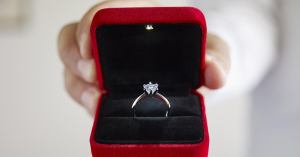Researchers in Florida have rediscovered an “ultra-rare” blue bee that was last seen four years ago and was thought to be extinct. The Florida Museum of Natural History confirmed in a statement on May 7 that postdoctoral researcher Chase Kimmel found a blue calamintha bee on March 9, marking the first time that the insect has been spotted since a sighting in 2016. Describing the rediscovery, Kimmel said that he “was open to the possibility that we may not find the bee at all so that first moment when we spotted it in the field was really exciting.”
“We observed a shiny little blue bee grabbing the flower and rubbing its head on the top portion of the flower two or three times before moving on to another flower,” Kimmel, who spotted the insect while installing a bee condo near Ashe’s calamint, another threatened species that blue calaminthas depend on for food, told CNN. “In reading about this unique behavior we were pretty shocked to see it.”
Videos by PopCulture.com
Kimmel captured the rare bee and used macrophotography and checked in with lead authors who studied the species to confirm it was a blue calamintha bee. The blue calamintha bee is thought to live only in the Lake Wales Ridge region and had previously only been recorded in four locations totaling just 16 square miles of pine scrub habitat at Central Florida’s Lake Wales Ridge, where it is thought to exclusively live. Since Kimmel’s initial spotting, he has since observed the rare bee in seven new areas they had previously not been recorded in.
“It’s one thing to read about habitat loss and development and another to be driving for 30-40 minutes through miles of orange groves just to get to a really small conservation site. It puts into perspective how much habitat loss affects all the animals that live in this area,” Kimmel said. “We’re trying to fill in a lot of gaps that were not previously known. It shows how little we know about the insect community and how there’s a lot of neat discoveries that can still occur.”
Kimmel and his adviser, Jaret Daniels, are now working on a two-year research project to determine the blue calamintha bee’s current population and the species’ nesting and feeding habits. Their research project will help determine if blue calaminthas qualify for protection under the Endangered Species Act. Their research, however, has faced setbacks due to the coronavirus pandemic.
“It’s a very time-limited flight. Now is when the bulk of that activity has to take place. hase is doing a fantastic job and we’re getting a lot of great data, but if it wasn’t for the COVID-19 virus we would have had more people in the field, so it has definitely scaled back what we’re able to do,” Daniels said in the news release. “All of this work is a collaboration. It takes an army to make it happen, you couldn’t do it without all the broader community of assistance that makes a project work to generate good results.”








